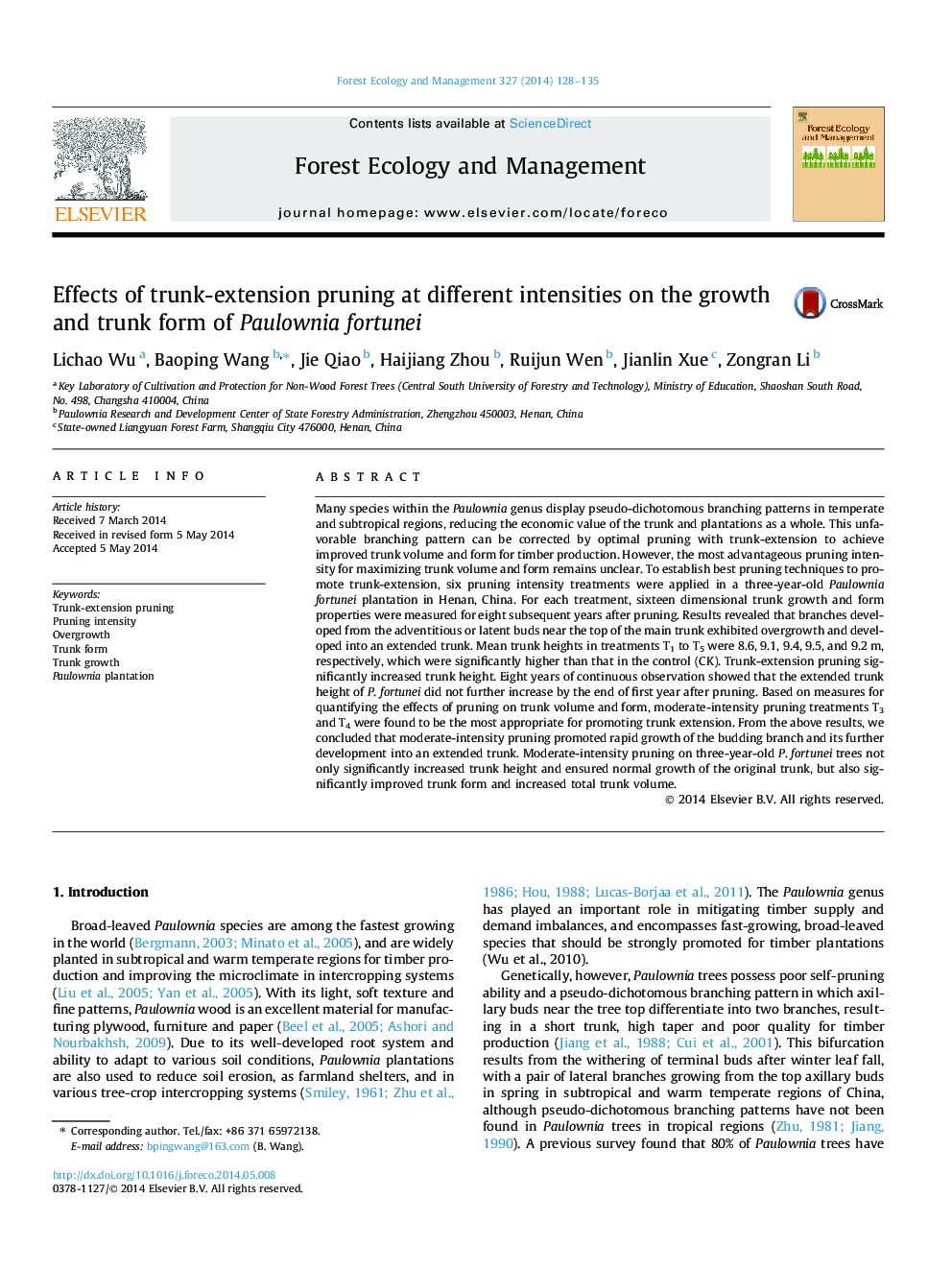| Article ID | Journal | Published Year | Pages | File Type |
|---|---|---|---|---|
| 6543482 | Forest Ecology and Management | 2014 | 8 Pages |
Abstract
Many species within the Paulownia genus display pseudo-dichotomous branching patterns in temperate and subtropical regions, reducing the economic value of the trunk and plantations as a whole. This unfavorable branching pattern can be corrected by optimal pruning with trunk-extension to achieve improved trunk volume and form for timber production. However, the most advantageous pruning intensity for maximizing trunk volume and form remains unclear. To establish best pruning techniques to promote trunk-extension, six pruning intensity treatments were applied in a three-year-old Paulownia fortunei plantation in Henan, China. For each treatment, sixteen dimensional trunk growth and form properties were measured for eight subsequent years after pruning. Results revealed that branches developed from the adventitious or latent buds near the top of the main trunk exhibited overgrowth and developed into an extended trunk. Mean trunk heights in treatments T1 to T5 were 8.6, 9.1, 9.4, 9.5, and 9.2Â m, respectively, which were significantly higher than that in the control (CK). Trunk-extension pruning significantly increased trunk height. Eight years of continuous observation showed that the extended trunk height of P. fortunei did not further increase by the end of first year after pruning. Based on measures for quantifying the effects of pruning on trunk volume and form, moderate-intensity pruning treatments T3 and T4 were found to be the most appropriate for promoting trunk extension. From the above results, we concluded that moderate-intensity pruning promoted rapid growth of the budding branch and its further development into an extended trunk. Moderate-intensity pruning on three-year-old P. fortunei trees not only significantly increased trunk height and ensured normal growth of the original trunk, but also significantly improved trunk form and increased total trunk volume.
Keywords
Related Topics
Life Sciences
Agricultural and Biological Sciences
Ecology, Evolution, Behavior and Systematics
Authors
Lichao Wu, Baoping Wang, Jie Qiao, Haijiang Zhou, Ruijun Wen, Jianlin Xue, Zongran Li,
